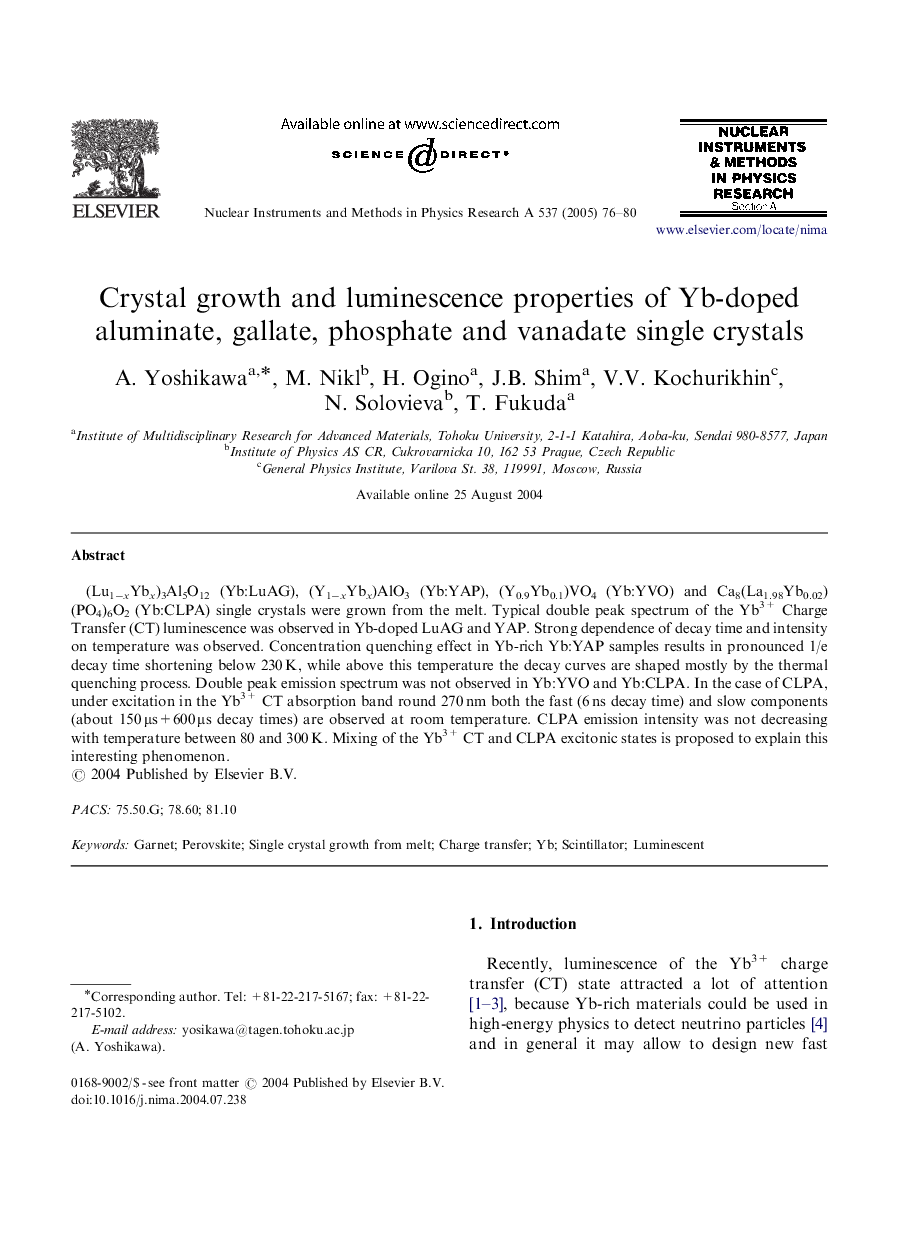| Article ID | Journal | Published Year | Pages | File Type |
|---|---|---|---|---|
| 9845856 | Nuclear Instruments and Methods in Physics Research Section A: Accelerators, Spectrometers, Detectors and Associated Equipment | 2005 | 5 Pages |
Abstract
(Lu1âxYbx)3Al5O12 (Yb:LuAG), (Y1âxYbx)AlO3 (Yb:YAP), (Y0.9Yb0.1)VO4 (Yb:YVO) and Ca8(La1.98Yb0.02)(PO4)6O2 (Yb:CLPA) single crystals were grown from the melt. Typical double peak spectrum of the Yb3+ Charge Transfer (CT) luminescence was observed in Yb-doped LuAG and YAP. Strong dependence of decay time and intensity on temperature was observed. Concentration quenching effect in Yb-rich Yb:YAP samples results in pronounced 1/e decay time shortening below 230 K, while above this temperature the decay curves are shaped mostly by the thermal quenching process. Double peak emission spectrum was not observed in Yb:YVO and Yb:CLPA. In the case of CLPA, under excitation in the Yb3+ CT absorption band round 270 nm both the fast (6 ns decay time) and slow components (about 150 μs+600 μs decay times) are observed at room temperature. CLPA emission intensity was not decreasing with temperature between 80 and 300 K. Mixing of the Yb3+ CT and CLPA excitonic states is proposed to explain this interesting phenomenon.
Related Topics
Physical Sciences and Engineering
Physics and Astronomy
Instrumentation
Authors
A. Yoshikawa, M. Nikl, H. Ogino, J.B. Shim, V.V. Kochurikhin, N. Solovieva, T. Fukuda,
